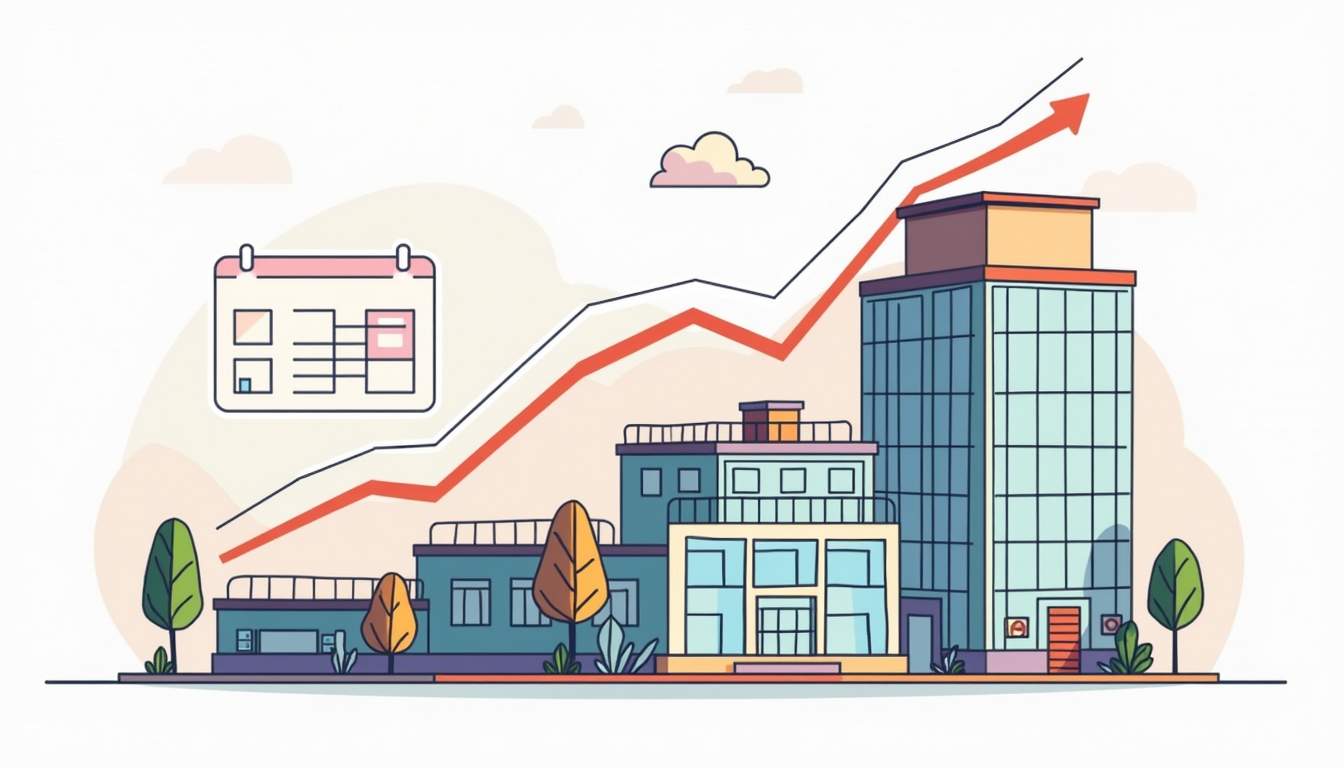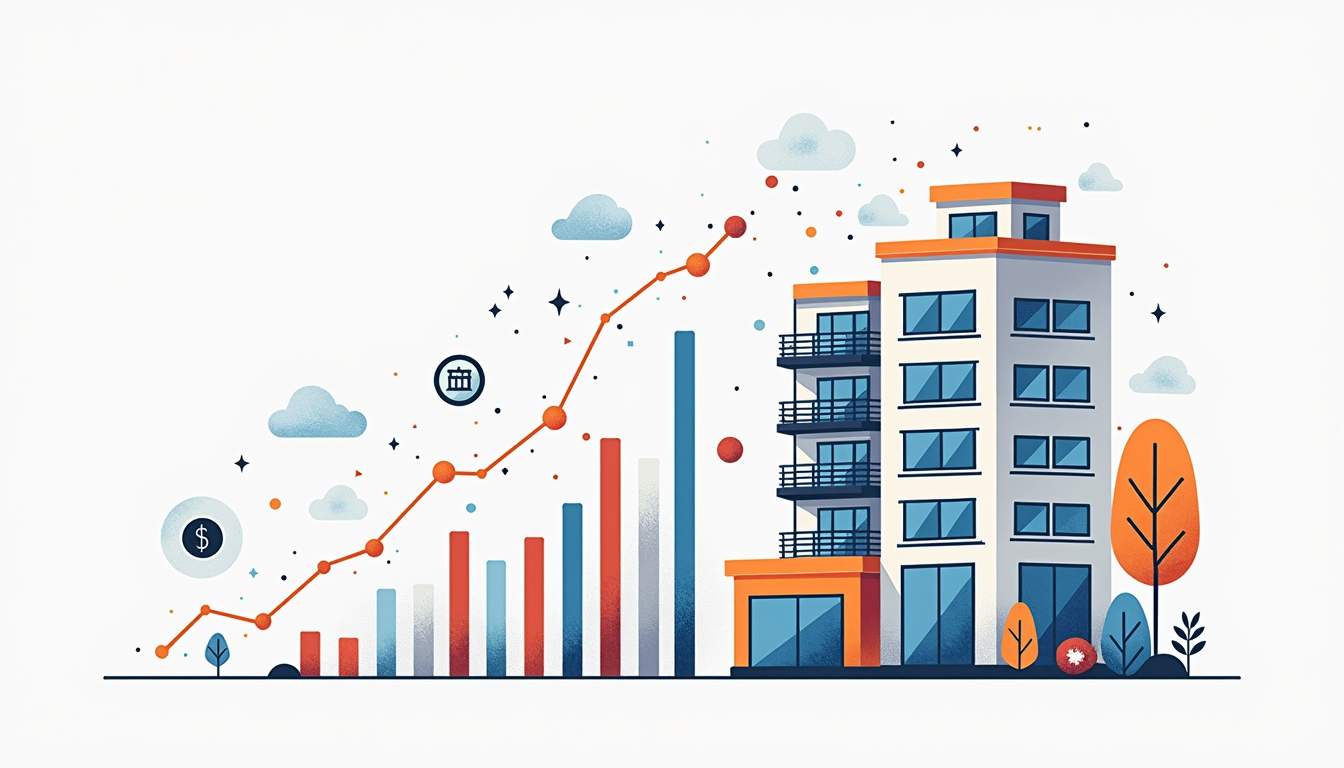Introduction to Occupancy Rate
The occupancy rate is a critical metric in the hospitality industry, particularly in hotel revenue management. It is defined as the percentage of available rooms that are occupied over a specific period. This metric serves as a key performance indicator (KPI) for hotel managers and revenue managers, providing insights into how well a hotel is performing in terms of attracting guests and maximizing its room inventory.
Understanding the occupancy rate is essential for making informed decisions regarding pricing strategies, marketing efforts, and operational efficiency. A higher occupancy rate typically indicates strong demand for rooms, while a lower rate may suggest the need for adjustments in pricing or promotional strategies to attract more guests.
In this glossary entry, we will delve into the various aspects of occupancy rate, including its calculation, significance, factors influencing it, and its role within the broader context of hotel revenue management.
Calculation of Occupancy Rate
The formula for calculating the occupancy rate is straightforward and can be expressed as follows:
Occupancy Rate (%) = (Number of Occupied Rooms / Total Available Rooms) x 100
For example, if a hotel has 100 rooms and 75 of them are occupied, the occupancy rate would be (75/100) x 100 = 75%. This simple calculation provides a clear snapshot of a hotel’s performance at any given time.
It is important to note that the total available rooms should account for all rooms that can be sold, excluding those that are out of service for maintenance or other reasons. This ensures that the occupancy rate reflects only the rooms that are genuinely available for guests.
Significance of Occupancy Rate in Hotel Revenue Management
The occupancy rate is a vital component of hotel revenue management as it directly impacts a hotel’s revenue potential. A higher occupancy rate generally leads to increased revenue, as more rooms occupied means more income generated from room sales. However, it is essential to balance occupancy with average daily rate (ADR) to maximize overall revenue.

In revenue management, the occupancy rate is often analyzed in conjunction with other metrics, such as revenue per available room (RevPAR) and average daily rate (ADR). This holistic approach allows hotel managers to identify trends and make data-driven decisions that enhance profitability.
Furthermore, the occupancy rate can influence operational decisions, such as staffing levels, inventory management, and marketing strategies. For instance, during peak seasons when occupancy rates are high, hotels may choose to increase room rates to capitalize on demand. Conversely, during low-demand periods, hotels may implement promotional offers to boost occupancy rates.
Factors Influencing Occupancy Rate
Several factors can influence a hotel’s occupancy rate, ranging from external market conditions to internal operational strategies. Understanding these factors is crucial for hotel managers aiming to optimize their occupancy rates.

Market Demand
Market demand is one of the most significant factors affecting occupancy rates. Seasonal trends, local events, holidays, and economic conditions can all impact the number of guests seeking accommodations. For example, a hotel located near a popular tourist attraction may experience higher occupancy rates during peak tourist seasons, while a hotel in a business district may see fluctuations based on corporate travel patterns.
Pricing Strategies
The pricing strategy employed by a hotel can significantly affect its occupancy rate. Dynamic pricing, where room rates are adjusted based on demand, can help maximize occupancy during high-demand periods while also ensuring competitive pricing during low-demand times. Implementing promotional rates, discounts, and packages can also attract guests and increase occupancy rates.
Marketing and Distribution Channels
Effective marketing strategies and the choice of distribution channels play a crucial role in driving occupancy rates. Hotels that invest in online marketing, social media, and partnerships with travel agencies can reach a broader audience and attract more guests. Additionally, utilizing online travel agencies (OTAs) can help increase visibility and bookings, particularly for hotels that may not have a strong brand presence.
Guest Experience and Reputation
The overall guest experience and a hotel’s reputation can significantly impact occupancy rates. Positive reviews, high ratings on travel websites, and word-of-mouth recommendations can enhance a hotel’s appeal and encourage more bookings. Conversely, negative experiences can deter potential guests and lead to lower occupancy rates.
Occupancy Rate vs. Other Key Performance Indicators
While the occupancy rate is a crucial metric in hotel revenue management, it should not be viewed in isolation. It is essential to consider it alongside other key performance indicators (KPIs) to gain a comprehensive understanding of a hotel’s performance.

Average Daily Rate (ADR)
The average daily rate (ADR) measures the average revenue earned per occupied room. It is calculated using the formula:
ADR = Total Room Revenue / Number of Occupied Rooms
By analyzing both occupancy rate and ADR, hotel managers can determine the overall revenue generated from room sales. A high occupancy rate combined with a low ADR may indicate that the hotel is not maximizing its revenue potential, while a low occupancy rate with a high ADR may suggest that the hotel is pricing itself out of the market.
Revenue per Available Room (RevPAR)
Revenue per available room (RevPAR) is another critical metric that combines occupancy rate and ADR to provide a more comprehensive view of a hotel’s performance. It is calculated using the formula:
RevPAR = ADR x Occupancy Rate
RevPAR allows hotel managers to assess how effectively they are generating revenue from their available room inventory. A high RevPAR indicates strong performance, while a low RevPAR may signal the need for strategic adjustments in pricing or marketing.
Strategies to Improve Occupancy Rate
Improving occupancy rates is a primary goal for hotel managers, and several strategies can be employed to achieve this objective. These strategies often involve a combination of pricing, marketing, and operational adjustments.
Dynamic Pricing
Implementing dynamic pricing strategies allows hotels to adjust their room rates based on real-time demand and market conditions. By leveraging data analytics and revenue management software, hotels can optimize their pricing to maximize occupancy during peak periods while remaining competitive during low-demand times.
Promotional Offers and Packages
Creating attractive promotional offers and packages can entice potential guests to book rooms. Special deals for extended stays, family packages, or seasonal promotions can help drive bookings and increase occupancy rates. Additionally, offering incentives such as complimentary breakfast or free parking can enhance the overall value proposition for guests.
Enhancing Online Presence
Investing in a strong online presence is crucial for attracting guests. This includes maintaining an informative and user-friendly website, engaging with potential guests on social media, and actively managing online reviews. A robust online marketing strategy can significantly increase visibility and drive bookings, ultimately improving occupancy rates.
Conclusion
In conclusion, the occupancy rate is a fundamental metric in hotel revenue management, providing valuable insights into a hotel’s performance and potential for revenue generation. By understanding how to calculate and analyze occupancy rates, hotel managers can make informed decisions that enhance profitability and operational efficiency.
Factors such as market demand, pricing strategies, marketing efforts, and guest experience all play a critical role in influencing occupancy rates. By employing effective strategies to improve occupancy, hotels can optimize their revenue potential and achieve long-term success in the competitive hospitality industry.
Ultimately, the occupancy rate is not just a number; it is a reflection of a hotel’s ability to attract guests and deliver exceptional experiences. By continuously monitoring and optimizing this key performance indicator, hotel managers can navigate the complexities of revenue management and drive their businesses toward greater profitability.
Maximize Your Hotel’s Occupancy with Prosper Hotels
Ready to elevate your hotel’s occupancy rate and thrive in the competitive hospitality market? At Prosper Hotels, we specialize in transforming your hotel’s revenue management strategies, leveraging innovative digital marketing, and streamlining group housing services. Our dedicated team is eager to partner with you to boost your revenue and enhance your team’s satisfaction. Learn More about how we can help you achieve and surpass your hotel’s performance goals.


 Drive More Hotel Revenue
Through Untapped Strategies
Drive More Hotel Revenue
Through Untapped Strategies
